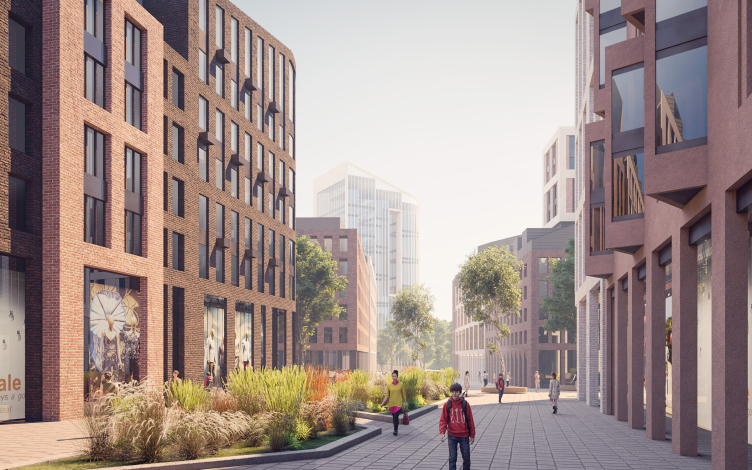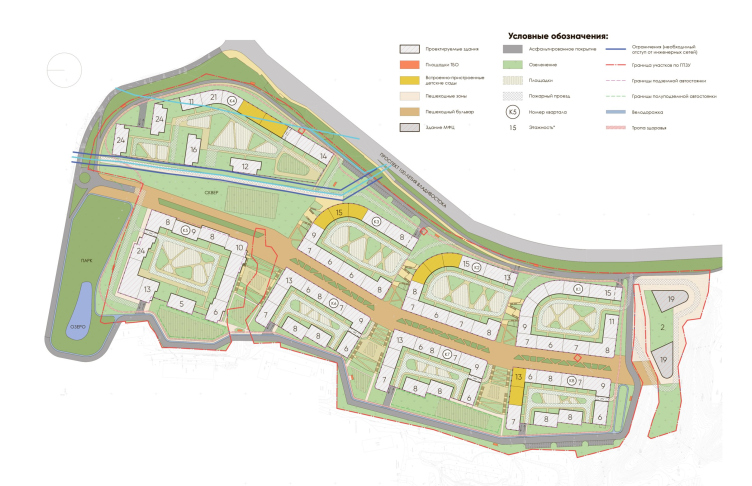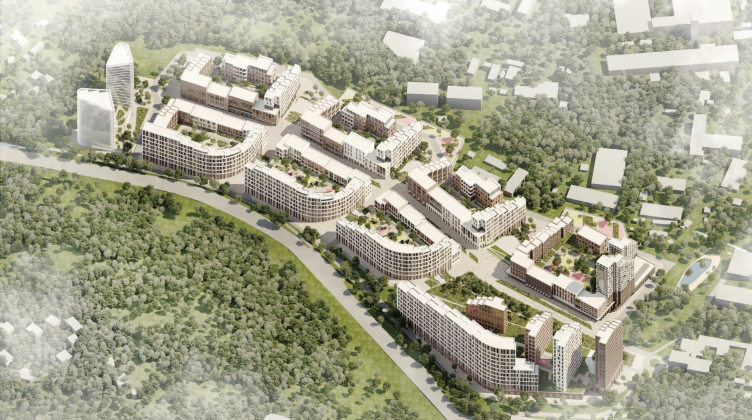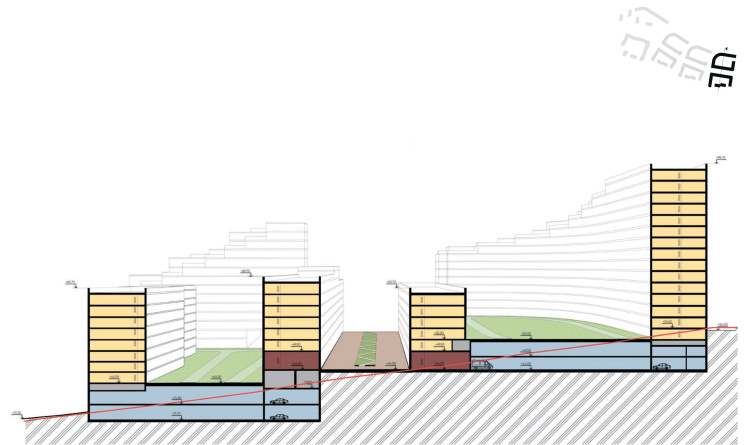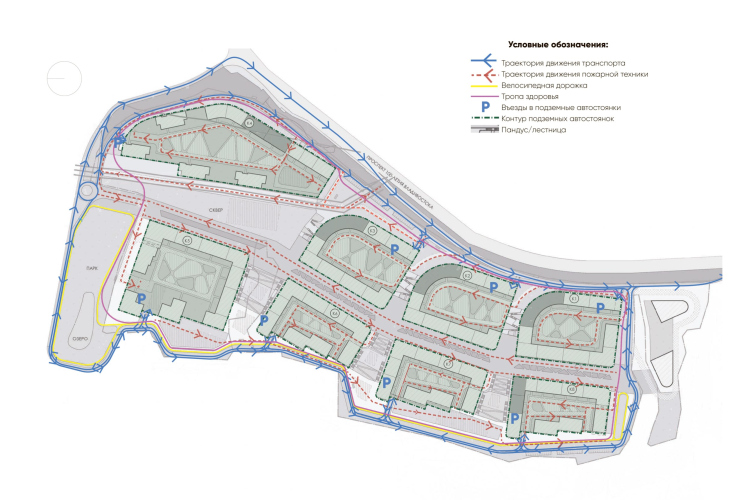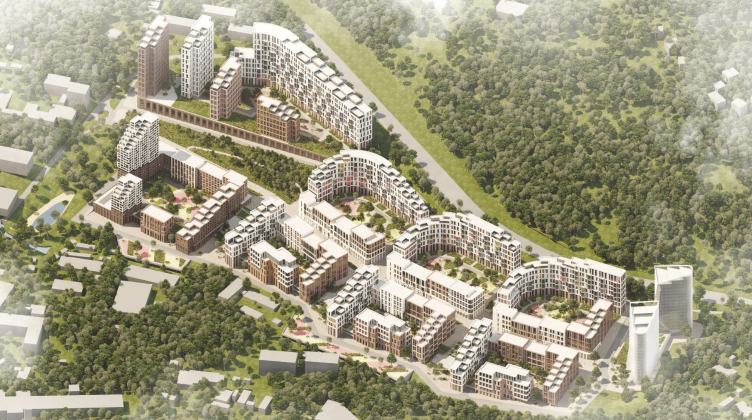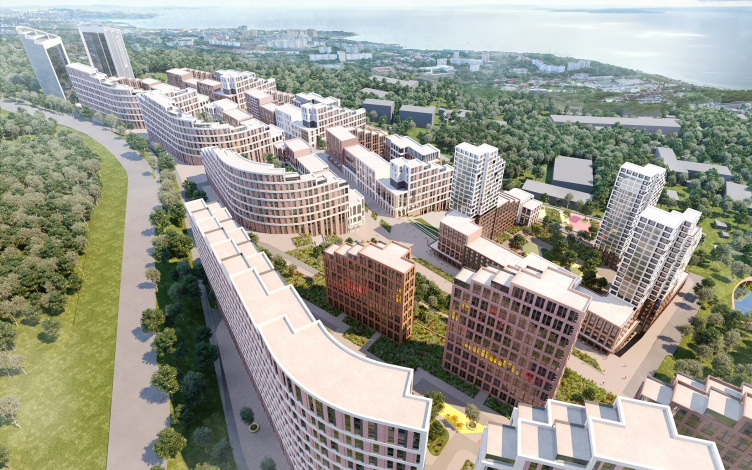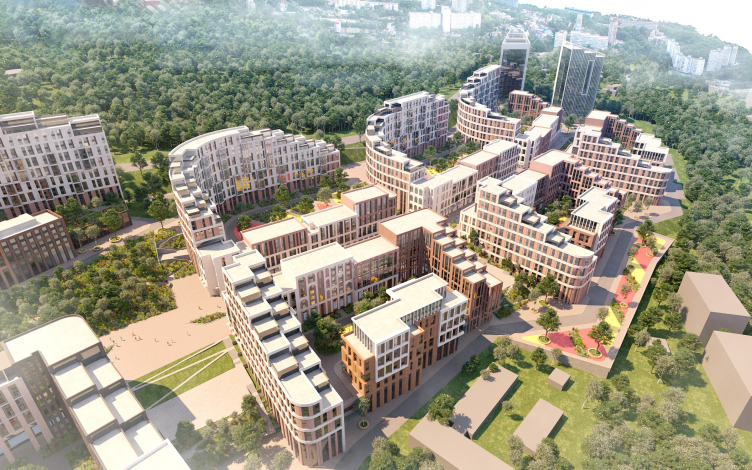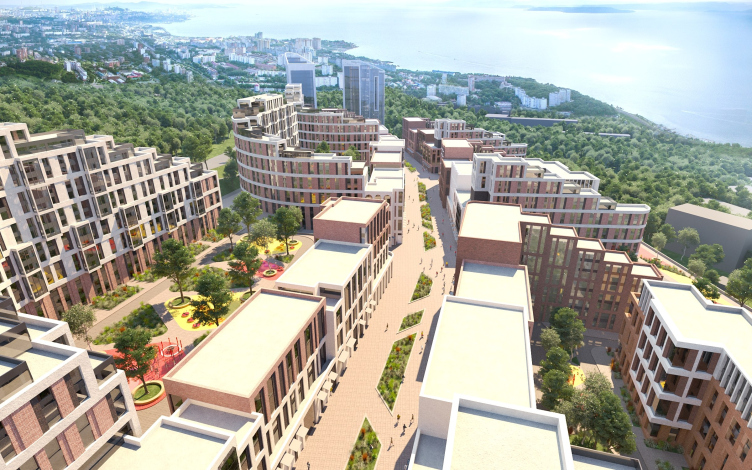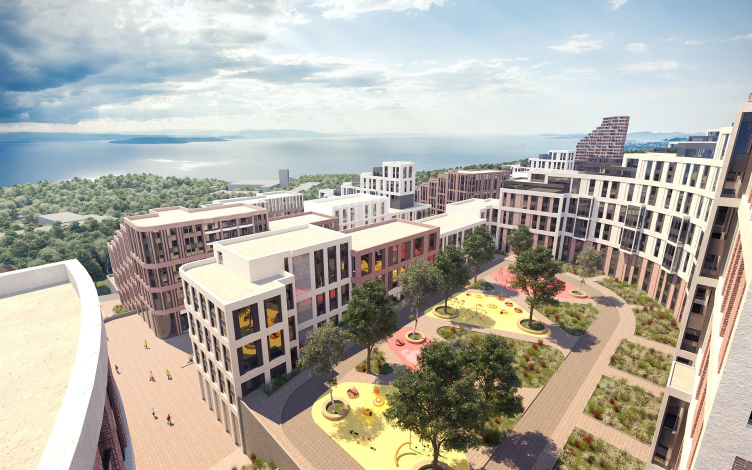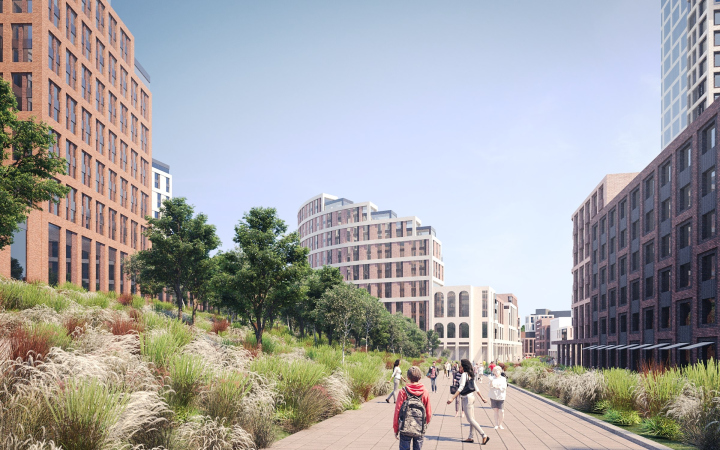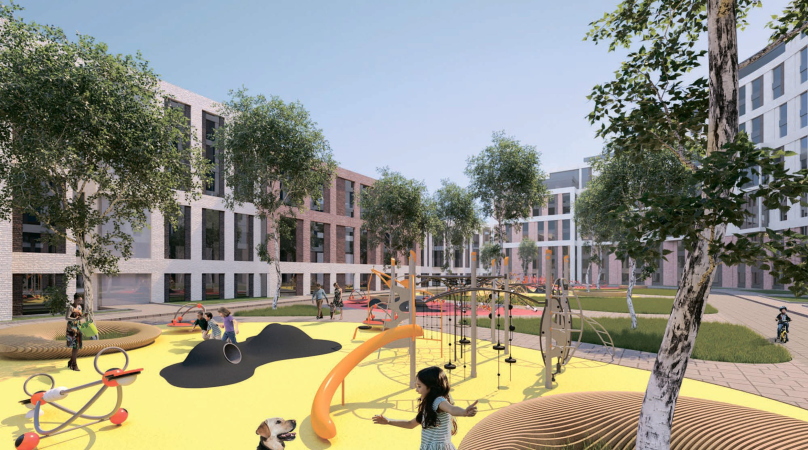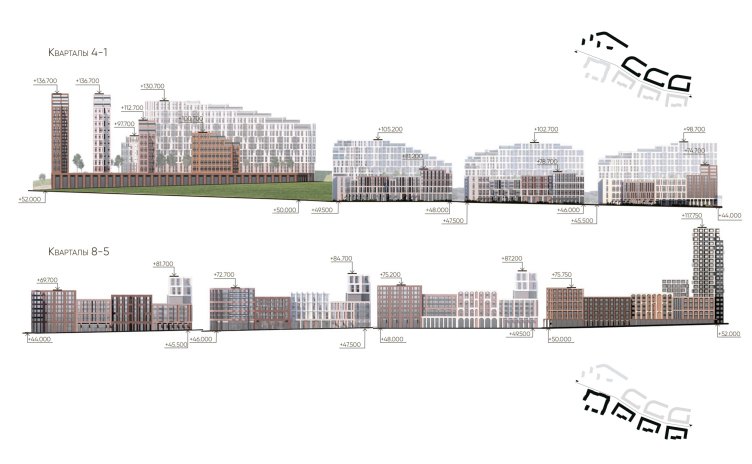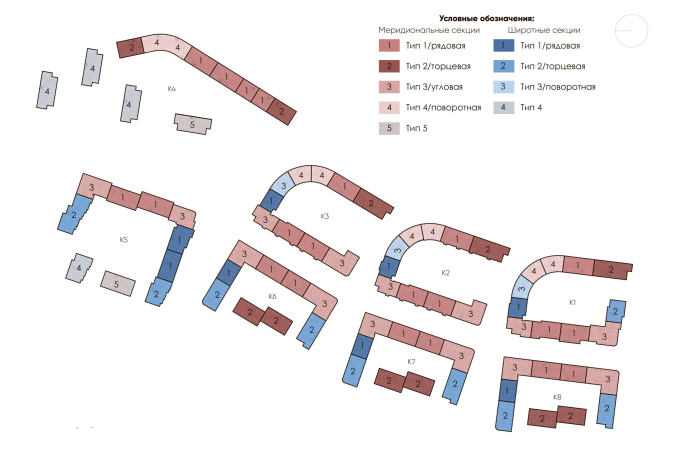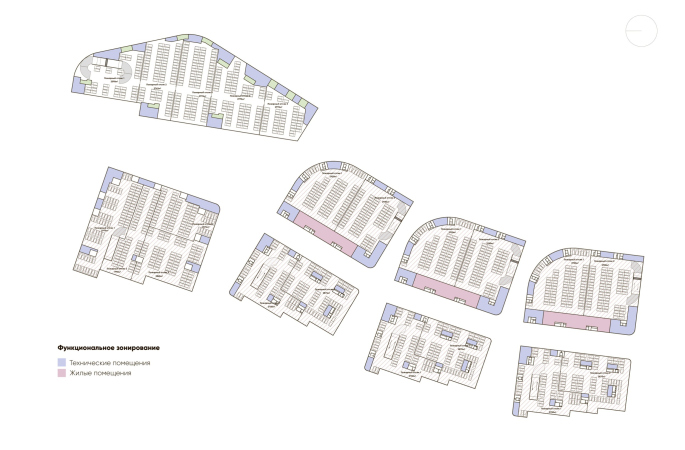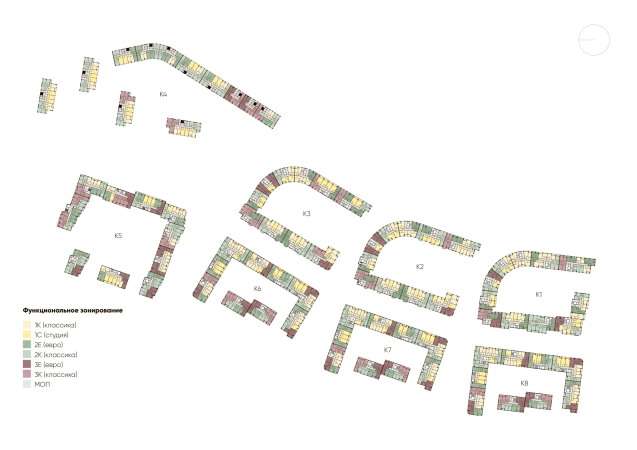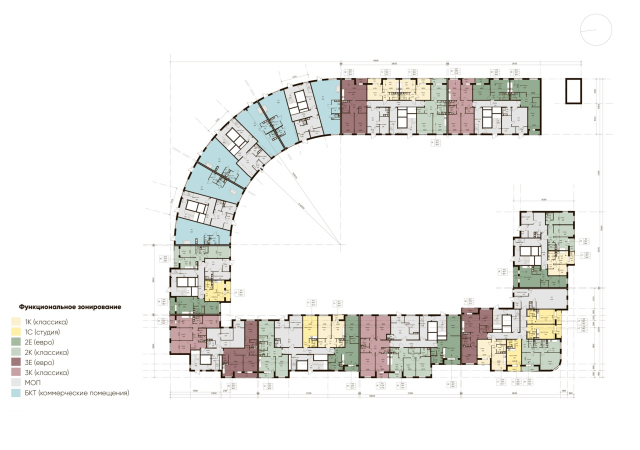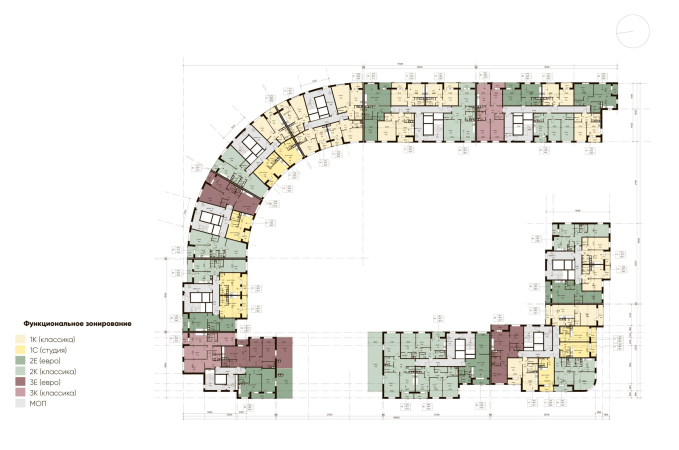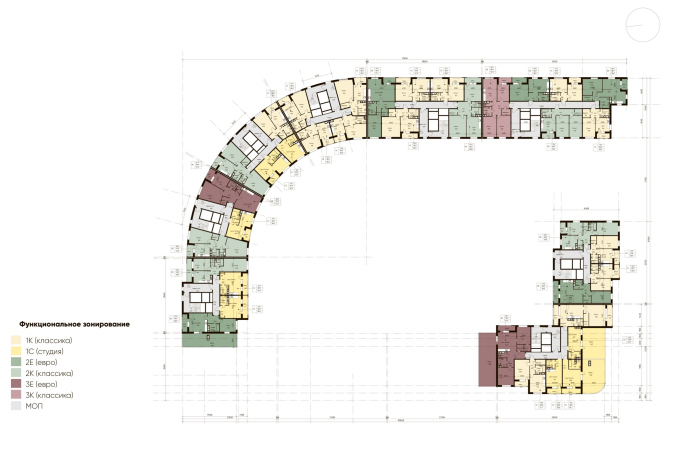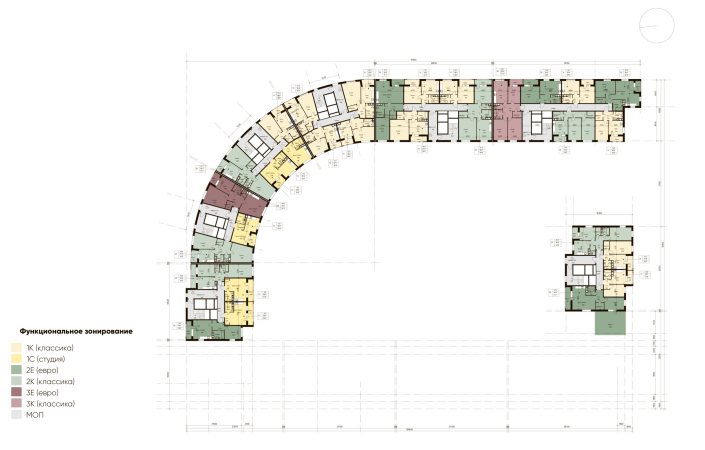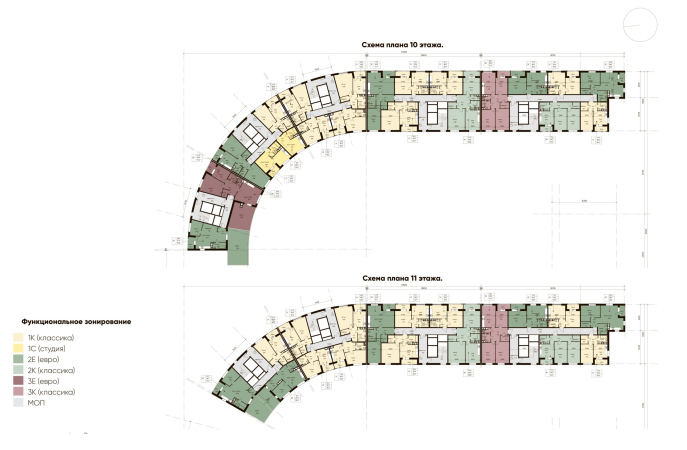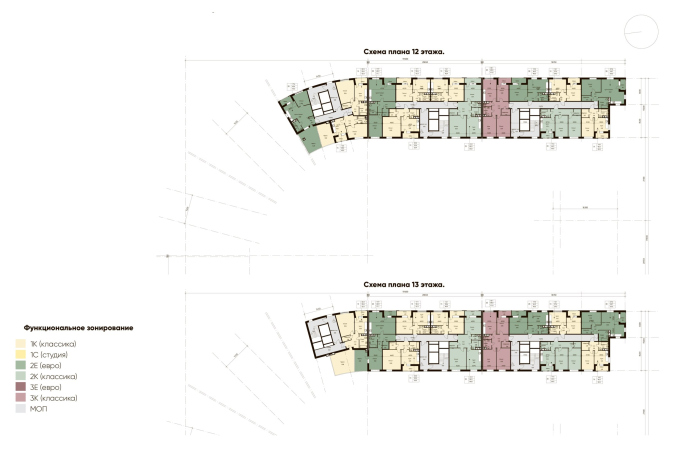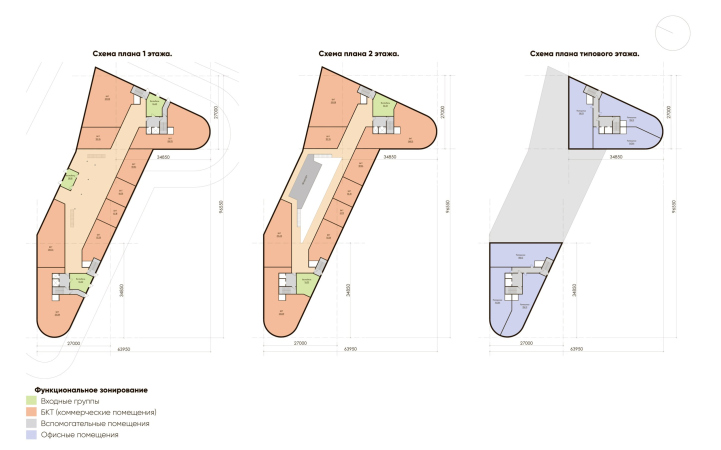The Akademgorodok district, in which the new complex will be situated, is the north part of Vladivostok from the side of the Amur Bay, whose sweeping views will be seen from most of the apartments. The not-too-dense and rather green spaces of this part of the city have been recently developed in a sporadic fashion; “candles” of residential buildings 25 stories high popping up here and there. Now the development is gaining momentum, and “Novaya Zarya” is likely to become the flagship project – both thanks to its size and the approach to forming the environment. The design and construction are carried out in accordance with the Integrated Territory Development Standard developed by the Dom.rf Foundation, which includes such principles as functional diversity, compactness of buildings, and residents’ comfort.
Novaya Zarya housing complex. The promenade
Copyright: © ASADOV Architects
The site is adjacent to the Avenue of the 100th anniversary of Vladivostok, leading from the center in the direction of the airport, stretched from north to south and cut by two ravines. The height difference from the road to the bay is a significant 40 meters.
Novaya Zarya housing complex. The location plan
Copyright: © ASADOV Architects
The architects divide the site into two large equal planning zones, establishing the main axis – a pedestrian boulevard, duplicating the Avenue of the 100th anniversary of Vladivostok. Each zone contains four blocks. If we are to compare the boulevard with a river, its “fountainhead” is located near two towers of multifunctional centers in the southern, narrower part of “Novaya Zarya”. In the wide northern part the boulevard “falls into” a vast public area with a square, a park and a promenade running along the retail gallery of the last block’s stylobate, which also ends with high-rise accents. The boulevard has “tributaries” – inter-block esplanades running perpendicular to it, which due to the relief are essentially a whole system of stairs, ramps, and platforms.
Novaya Zarya housing complex. Simplified master plan
Copyright: © ASADOV Architects
Novaya Zarya housing complex
Copyright: © ASADOV Architects
The blocks form four lines of construction, which descend in tiers toward the bay. Because of the steep slopes, the fire passages are arranged in a serpentine fashion, the emergency vehicles can pass down the main roads and the boulevard, which then will provide access to the courtyards. And the passageways between the blocks act as “paths” that allow pedestrians to shortcut the descent.
Novaya Zarya housing complex. Axonometric section by blocks 1-8
Copyright: © ASADOV Architects
Novaya Zarya housing complex. The transport layaout
Copyright: © ASADOV Architects
As was mentioned above, there are four blocks on each side of the boulevard. The first six, located in the narrow part, are arranged in a similar way and are “planted” more densely. In the wider part of the complex, as if coming out of a narrow bottle neck, the construction spills freely and gains the maximum height. The general principle for the whole complex is a gradual lowering towards the bay, from 24 to 6 floors.
Novaya Zarya housing complex
Copyright: © ASADOV Architects
ASADOV Architects looked to saturate the complex with various typologies, and this is why each tier has peculiar features of its own.
The front of the Avenue of the 100th Anniversary of Vladivostok is formed by “curtain walls” of the appropriate scale: here the rounded terraced sections are connected with the linear ones, and together they form courtyards oriented towards the two towers of the multifunctional center. This configuration allows the fire truck to enter from the side of the avenue, and the courtyard – to expand due to the visual connection with the esplanade.
Novaya Zarya housing complex
Copyright: © ASADOV Architects
The second line of blocks is more “rigid”: the rectangular brackets are closed by free-standing sections, and the amplitude of height fluctuations is more prominent. Here, the architects acted as an “equalizer”, leveling out the “hollows” and ledges of the sections so that they do not block each other’s view of the Amur Bay and are in overall harmony.
Novaya Zarya housing complex
Copyright: © ASADOV Architects
The different scale of the sections and houses sets the rhythm and the silhouette, and allows the formation of clear urban spaces. The terraces of the “brackets” of the upper quarters continue in the pyramidal ledges of the lower ones. Their height allows them to accentuate the esplanades. The boulevard-oriented sections, on the other hand, are of medium height, thus forming a cozy pedestrian street, with cafes and stores providing an inflow of visitors.
Novaya Zarya housing complex
Copyright: © ASADOV Architects
There is also diversity within each individual block: the sections that make them up have different heights, finishes, facade grids and, more importantly, apartment layout. On the courtyard side, there are numerous little gardens; on the upper floors, there may be terraces, which are supposed to be protected from the sea winds by two-meter glass screens.
Novaya Zarya housing complex. The courtyard
Copyright: © ASADOV Architects
In this way, a self-sufficient environment is formed in Novaya Zarya. The pedestrian promenade is complemented by a shopping gallery located in the stylobate of the northern block with freestanding high-rises. A walk in the yard, where mature trees will be planted and playgrounds will be arranged, will be diversified by going to the park with a pond. In addition to the sports areas, there will be bicycle paths and a health path encircling the whole block – taking into account the relief, it will provide a good exercise. The two multifunctional centers will provide jobs and help redistribute labor migration flows.
Four kindergartens for 75 children are responsible for the social infrastructure. A municipal school is planned to be built on a neighboring land site.
Novaya Zarya housing complex. The boulevards
Copyright: © ASADOV Architects




